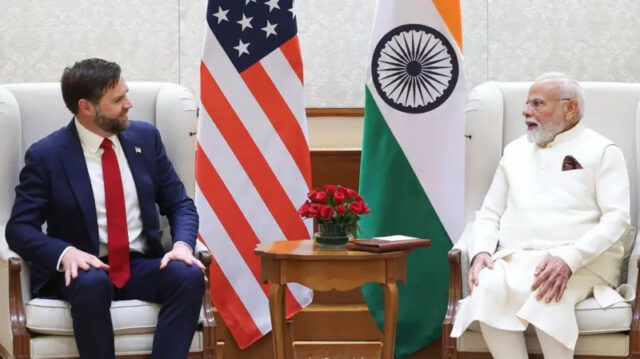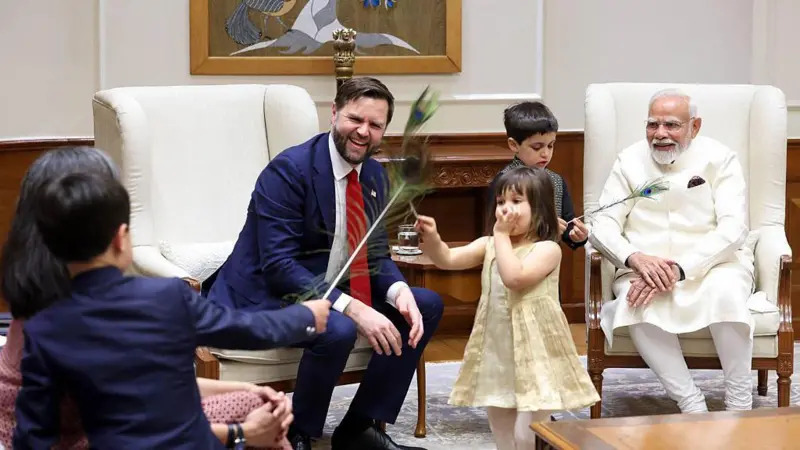
U.S. Vice President JD Vance has called for deeper and more strategic ties between India and the United States, emphasizing the need for cooperation to ensure a “prosperous and peaceful” 21st century. Speaking at a gathering in the historic city of Jaipur during his official visit to India, Vance delivered a powerful message about the shared global responsibility of the two democracies.
“But I also believe that if we fail to work together successfully, the 21st Century could be a very dark time for all of humanity,” Vance warned, highlighting the broader implications of the bilateral relationship beyond economics.
A Critical Moment in Trade Negotiations
The vice president’s speech comes amid ongoing and rapidly progressing trade negotiations between India and the U.S. Both sides are racing to finalize a deal before President Donald Trump’s 90-day suspension on higher tariffs ends on July 9. India, which faced the prospect of 27% tariffs on key exports, has been in intense talks to avoid economic fallout.
Vance confirmed that the two nations have “finalised the terms of reference” for the trade talks, calling it “a vital step” toward achieving the shared vision of President Trump and Prime Minister Narendra Modi.
Praise and Realism in Diplomatic Tone
Calling Modi “a tough negotiator” who “drives a hard bargain,” Vance received applause from the Jaipur audience. However, he didn’t shy away from acknowledging the trade friction between the two nations. The U.S. has criticized India’s high tariffs, with U.S. Trade Representative Jamieson Greer citing a “serious lack of reciprocity” in trade ties.
Despite recent reductions by India in duties on several goods, sticking points remain, particularly in the agriculture sector—where the U.S. seeks market access and India remains defensive.
Beyond Trade: Defense and Energy
The relationship isn’t solely economic. Vance emphasized U.S. interest in expanding energy and defense cooperation with India, adding to a broader strategic partnership that has grown significantly in recent years.
On Monday, Vance and Modi also discussed collaborations in advanced technologies and national security, underscoring India’s growing role in America’s Indo-Pacific strategy. The leaders are expected to meet again later this year at the Quad Summit, which Delhi will host.
A Personal Connection to India
Vance’s visit is not just diplomatic—it’s deeply personal. Accompanied by his wife Usha and their three children, the family has been embracing Usha’s Indian roots. Usha’s parents migrated from Andhra Pradesh, and the couple expressed a desire to introduce their children to Indian culture and heritage.

Images of their children dressed in traditional Indian attire went viral across Indian media, adding a relatable and human touch to the official visit. The family visited Jaipur’s iconic Amer Fort on Tuesday and is set to tour the Taj Mahal in Agra before returning to the U.S.
Looking Ahead
As Washington and Delhi edge closer to a landmark trade agreement, Vance’s visit underscores the growing geopolitical and cultural significance of India-U.S. relations. With high stakes on trade, technology, and global leadership, both nations appear ready to take bold steps toward a new era of partnership.
“The future depends on what we build together,” Vance said. And with the clock ticking on tariff deadlines and growing regional challenges, the world is watching.



